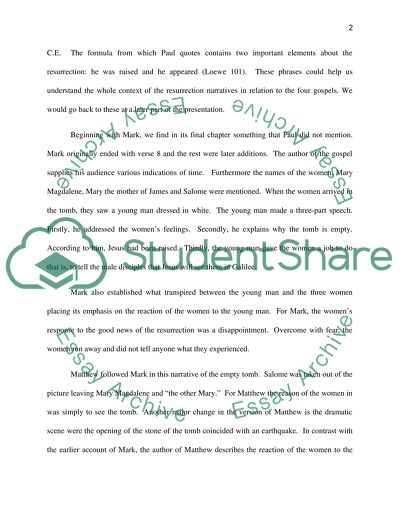Cite this document
(“The Woman at the Tomb Essay Example | Topics and Well Written Essays - 1000 words”, n.d.)
Retrieved from https://studentshare.org/religion-and-theology/1429745-synoptic-analysis-of-gospel-of-matthew-mark-and
Retrieved from https://studentshare.org/religion-and-theology/1429745-synoptic-analysis-of-gospel-of-matthew-mark-and
(The Woman at the Tomb Essay Example | Topics and Well Written Essays - 1000 Words)
https://studentshare.org/religion-and-theology/1429745-synoptic-analysis-of-gospel-of-matthew-mark-and.
https://studentshare.org/religion-and-theology/1429745-synoptic-analysis-of-gospel-of-matthew-mark-and.
“The Woman at the Tomb Essay Example | Topics and Well Written Essays - 1000 Words”, n.d. https://studentshare.org/religion-and-theology/1429745-synoptic-analysis-of-gospel-of-matthew-mark-and.


